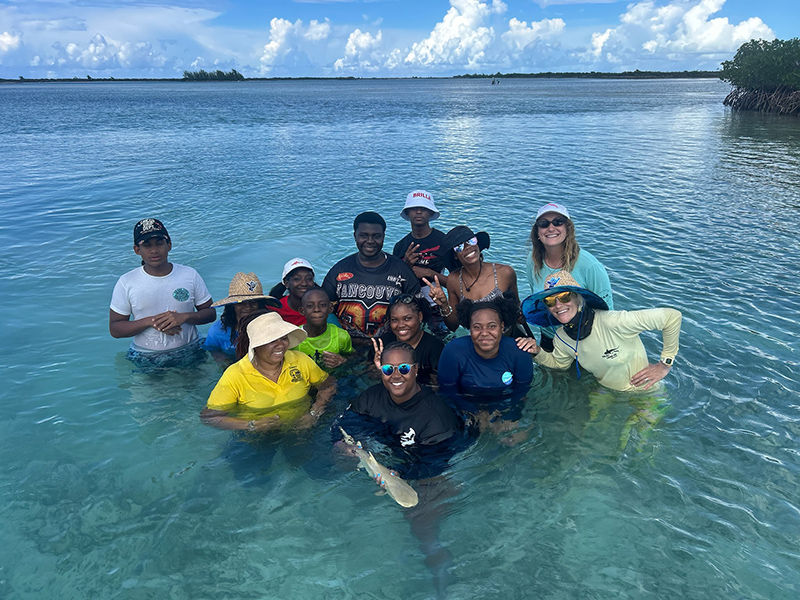Meet Wildlife and Scientific Illustrator Marc Dando
- Sharks4Kids

- Oct 14, 2021
- 4 min read
Updated: Oct 15, 2021
Marc Dando has always balanced art and science, first at school and then at university where he completed an honours degree in Zoology at Nottingham University. On finishing his degree course he moved into a career as a graphic designer. After many successful years in commercial graphics an opportunity occurred to work on various natural history projects, initially in design, but finally into his passion for wildlife and scientific illustration. For the past 25 years the majority of his work has been in wildlife illustration, mainly marine, and in that capacity has worked alongside many eminent scientists. Sealife: a complete guide to the marine environment was the first book he worked on, but it was Sharks of the World that took three and a half years to complete, working with Leonard Compagno and Sarah Fowler that established his work. With Dave Ebert he has now worked on the updated Sharks of the World and has collaborated with him on further projects for the FAO and IFAW. Alongside the more traditional watercolor, pencil and pen and ink work Marc uses computer-based illustration in his work. These illustrations have been been used for a series of children's field guide books, posters, displays and detailed illustrations for many guides used around the world. But, when time allows, he still works on more artistic pieces with its inspiration always from nature. His work has been exhibited at the Musée Océanographique de Monaco, The Mall Galleries in London and the Museum of Art, Fort Lauderdale. The majority of public displays of his illustrations are now found in many aquaria around the world; but it is his publication based work that can most often be seen, in books, field guides, scientific-based literature and magazines.
To learn more or purchase books WEBSITE
Follow Marc's Work on Instagram

1. What is your favorite shark and why?
Any one of the ghost sharks (Apristurus species). They are so mysterious, we know so little about them. Living in the depths with their big flattened snouts, their green eyes (not always big) and when you see live footage of them they are so mesmerizingly graceful.
2. What is one shark you would like to see/swim with/dive with?
Broadnose Sevengill Shark. I have heard so many people talk about their encounters with this shark- it looks to primeval. I would like to say also a ghost shark but I don’t think I could dive that deep and tell the tale.

3. How did you get started with shark illustration? What inspired you?
A long story, but in a nutshell, I came out from university with a degree in zoology but always had a flair for art. There was not many opportunities for me to use my degree so amongst working abroad I drifted in to graphic design, eventually working for a studio. I left the studio again to pursue my own path and one client, Christopher Helm, put me on another path. I worked on designing books and one book Sealife: the completed guide to the marine environment I was asked to illustrate the majority of and from there I was asked by HarperCollins to do a book on Sharks which after the book was dropped in the UK myself and my wife as Wild Nature Press redesigned and reworked and I have not looked back since. As for inspiration- firstly the wonder of nature and all those people on the way that helped me get to here.

Angelshark in the sand Copyright Marc Dando
4. Why do you think artwork is important for shark/ocean conservation? How can it help?
Illustration can really help to identify the species that are seen, washed up, caught and seen in fish markets. Photographs can of course do this but not with the clarity an illustration can portray; the illustrations bring out the key features clearly and can be easily compared to other similar species. With this knowledge scientists can get a better picture of how well species are doing under the enormous pressure we humans inflict on them. They can also put pressure on governments to put legislation in place to protect or limit exploitation of animals, by showing from the information they have found how many species are endangered. Because illustrations are engaging to everyone and if done properly can make accurate identification a thing that all of us can do we too can become scientists- ‘citizen scientists’.

Lemon shark life cycle and habitat use Copyright Marc Dando
5. What message do you hope people take away from your work?
To look at the natural world and marvel- to look closely at nature and be fascinated- to be inspired to start to identify and understand the myriad of life we are so fortunate to be part of.

Juvenile and adult lemon shark and blacktip reef shark Copyright Marc Dando
6. What is one thing you wish everyone knew about sharks?
That they are so important to the marine environment, so treating them just as a food source, as bycatch or something to fear should be put in a locked box, dropped in concrete and thrown down the deepest mine shaft.






















